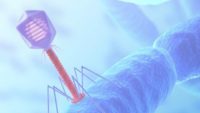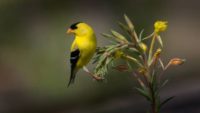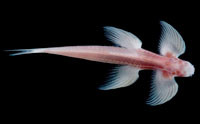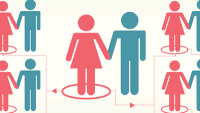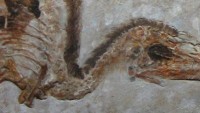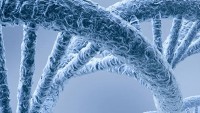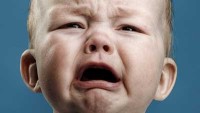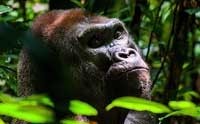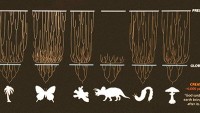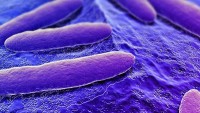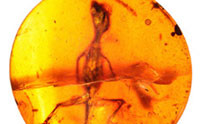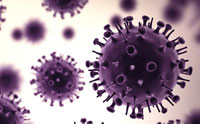By Ken Ham Pregnant mothers often choose to take a chorionic villus sampling (CVS) test when they are 11 to 14 weeks pregnant. This test analyzes placental cells for genetic abnormalities to predict genetic disorders, such as Down syndrome. Well, research on mouse embryos suggests that even when normal cells and abnormal cells are mixed half and half in the placenta, the baby can still be born perfectly healthy. This happens because the abnormal cells are killed via programmed cell death, and healthy cells replace them. Although the baby mouse itself has replaced the abnormal cells, the placenta still retains [More]
By Dr. Andrew Fabich The list of beneficial functions for Endogenous Retroviruses continues to grow. ERVs also promote healthy immune responses—another creationist confirmation. …read more Read more here: AIG Daily
By Dr. David W. Boyd, Jr. A scientist with a biblical worldview has to account for the different species of birds found today in each created bird kind from the Flood to the present. …read more Read more here: AIG Daily
By Ken Ham A fire was deliberately started in a nature preserve in Australia to help fire-dependent vegetation grow. Instead of fleeing the fire, as most animals would do, the echidnas stuck around, and nearly all of them survived. Researchers believe it’s likely that they curled up in thick trees or logs and entered a state known as torpor. This allows them to become “inert and chilly,” thus heavily reducing their energy needs and helping them to survive with limited resources. Interestingly, some creation researchers think that perhaps some animals on the Ark entered a torpid state during …read more [More]
Humans alone cry tears which are vital to our emotional health. …read more Read more here: creation.com
By Ken Ham That was a bit tongue-in-cheek, but a recent photo gallery titled “8 Animals That Are Evolving Quickly” made me shake my head. Their explanation for quick evolution? “Rapid adaptability.” Now those who understand the principles of biology, regularly read my blog and AiG articles, or who have visited the Creation Museum should immediately note that “rapid adaptability” is not evolution. In fact, it’s really the opposite of a molecules-to-man type of supposed process. The first caption reads, “Whether it’s climate change or other environmental conditions, animals are constantly evolving to better survive. Most people think of animal [More]
Scientists recently discovered another bizarre fish. This one has a pelvic girdle. Is it the missing link evolutionists have been searching for? More… …read more Read more here: icr.org
By Ken Ham According to a recent study by Montana State University paleontologists, certain sauropods may have had ligaments in their long necks that allowed them to graze more efficiently. These sauropods “had split spines that may have supported two elastic ligaments. When the dinosaurs extended their necks to feed on the left side, the ligament on the right side was stretched, storing energy. As the neck swung back to the right, that energy was released. The same recoil action happened when the sauropods swung their necks to the right.” This sweeping motion allowed them to graze on plants at [More]
The pitcher plant that encourages small animals to drop by, leaving their ‘calling card’ …read more Read more here: creation.com
By Dr. Nathaniel T. Jeanson These results underscore the biblical model of human origins and simultaneously undercut the validity of the evolutionary out-of-Africa model. …read more Read more here: AIG Daily
By Ken Ham With the Ark Encounter opening on July 7 in Northern Kentucky, many of the visitors will encounter the concept of animal kinds, perhaps for the first time. Kind is the biblical term used to refer to groups of living things. All organisms reproduce “according to their kind” (Genesis 1:11–12, 21, 24–25). In most instances, research has placed kind around the same level as family in our modern classification system. Now Ark Encounter visitors unfamiliar with this concept might be surprised to learn that Noah took only around 2,000 animal kinds with him on the Ark—not millions of [More]
By Dr. Elizabeth Mitchell Evolutionary scientists think birds evolved from dinosaurs and to help prove it, they’ve engineered a chicken embryo to grow a dinosaur-like lower leg. …read more Read more here: AIG Daily
What happens when a soil fungus runs into a hard mineral containing precious trace amounts of nutritious iron? A poorly designed fungus might go hungry and languish like a forlorn noodle, but researchers recently found ways that a soil fungus conducts a miniature mining operation. More… …read more Read more here: icr.org
By Dr. Kevin Anderson Evolutionists conclude “the birth of new genes is an important motor of evolutionary innovation,” but how are new genes made? …read more Read more here: AIG Daily
By Ken Ham The author bemoans the popularity of intelligent design and the statistic that “more than a third of people in [the UK and US] reject the theory of evolution outright or believe that it is guided by a supreme being.” This secularist is quite upset that her religion of atheistic naturalism does not reign supreme. She says that, “It is critical that the voting public have a clear understanding of evolution. Adaptation by natural selection, the primary mechanism of evolution, underpins a raft of current social concerns such as antibiotic resistance, the impact of climate change and …read [More]
By Dr. David Menton Every human being has the ability to communicate with a range of expressions no other creature can match. …read more Read more here: AIG Daily
Old evolutionary assumptions seem hard to break. The recent assembling of ape DNA sequences based on the human genome provides a good example. This new gorilla genome study, despite capitalizing on advanced DNA sequencing technology, suffers from the same old malady. More… …read more Read more here: icr.org
By Dr. Jason Lisle This study shows that created heterozygosity, together with natural processes that are observable, is sufficient to account for species’ diversity. …read more Read more here: AIG Daily
By Dr. Andrew Fabich We need to balance our understanding of the microscopic world because it is an essential part of and critically affects our everyday life. …read more Read more here: AIG Daily
DNA is a biochemical that contains genetic information. And like all other cellular ingredients, it decays if cellular systems don’t maintain it. Now, scientists are more confident about how fast it falls apart after a cell dies .A team of researchers recently completed a thorough investigation of 158 ancient leg bones that belonged to giant extinct birds called moa, which once lived on New Zealand’s South Island. Using radiocarbon ages and measures of DNA integrity, the researchers generated a DNA decay rate with unprecedented rigor. But their results do not fit with claims from secular scientists who have found plenty [More]
Publishing online in Science Advances, a team of zoologists recognized familiar lizard forms in a dozen amber-encased lizard specimens. What did these lizards look like when they crawled around dinosaur feet? These Burmese ambers clearly show the answer. More… …read more Read more here: icr.org
Why the elephant is losing its tusks (and it’s not evolution!) …read more Read more here: creation.com
By Dr. Elizabeth Mitchell Evolutionists claim to know when mitochondria evolved yet still cannot show how or that mitochondria are anything but one of God’s great designs. …read more Read more here: AIG Daily
Evolutionists have long claimed that human chromosomes were infected with many different viruses over millions of years, which then multiplied in the genome. Then, as some of these sections of virus-like DNA were shown to be functional, evolutionists claimed they had become “tamed” like the domestication of wild animals. When virus-like DNA were first discovered, it was thought the majority of them would prove to be junk—until now. More… …read more Read more here: icr.org
By Brian Thomas Hardly a month passes without new reports of “soft tissue” discovered in fossils. Could this material last millions of years? …read more Read more here: AIG Daily
Everything about the hummingbird shrieks perfect design rather than any random processes. …read more Read more here: creation.com
Beneficial mutations are real but they produce nothing new, only triggering into action the built-in modes of variation. …read more Read more here: creation.com




















